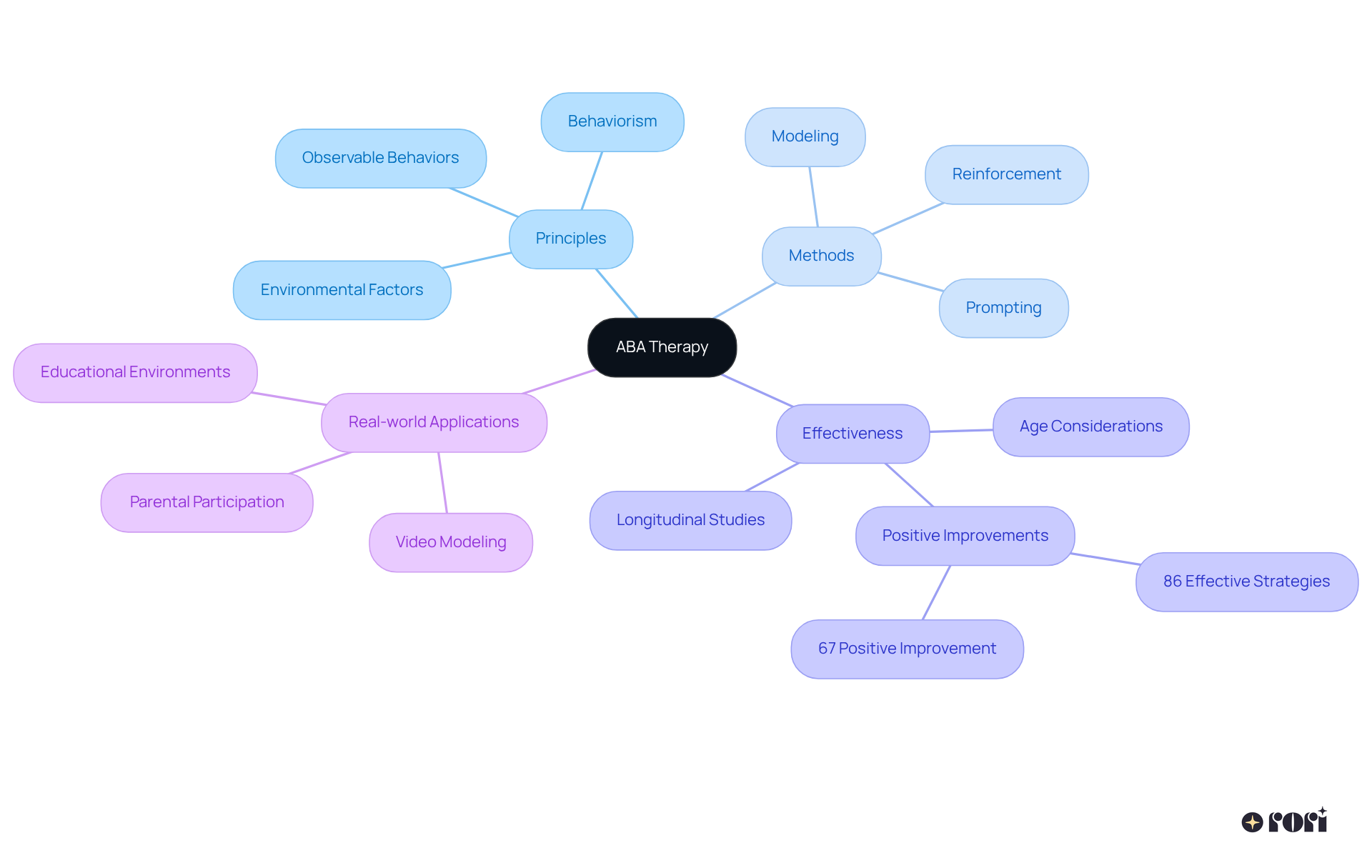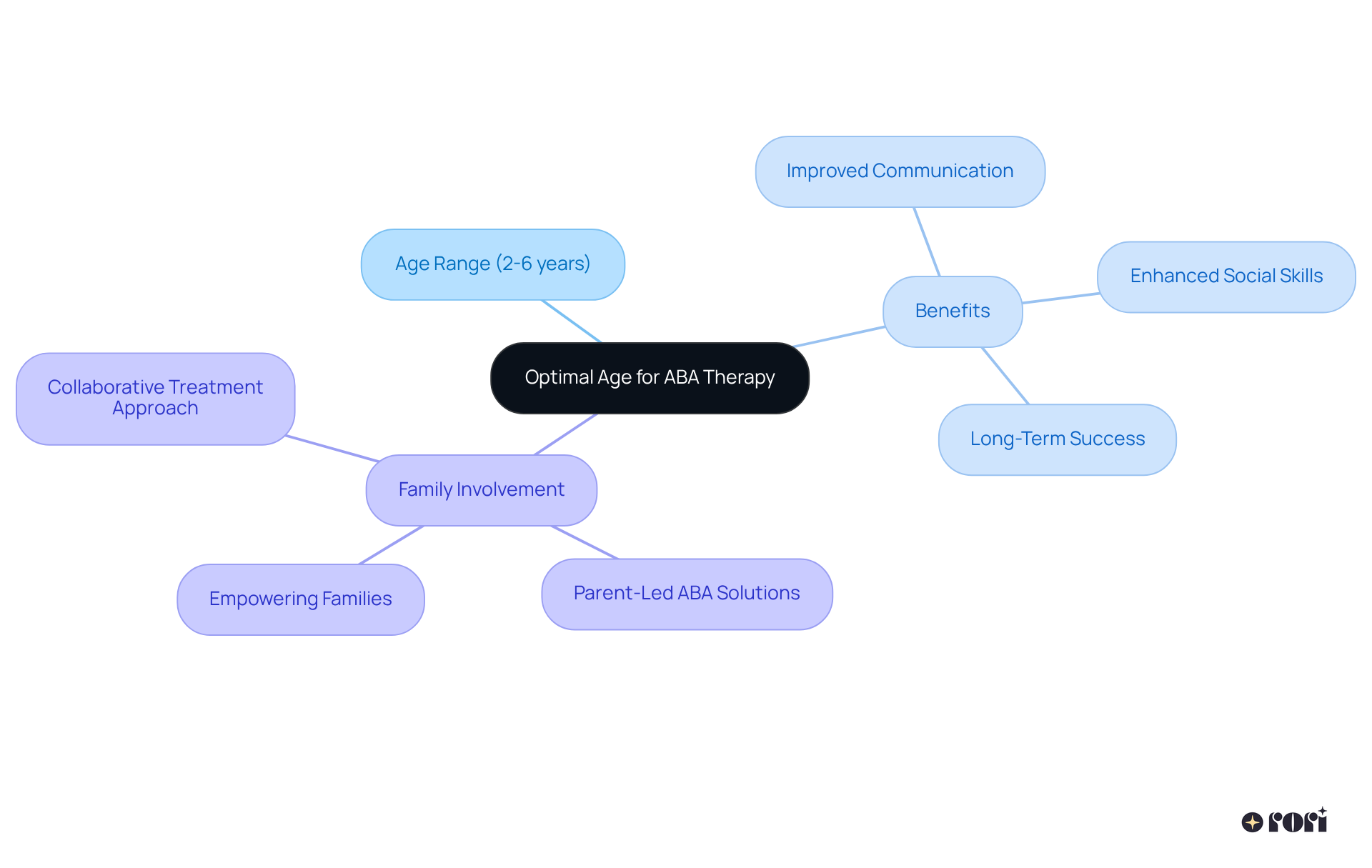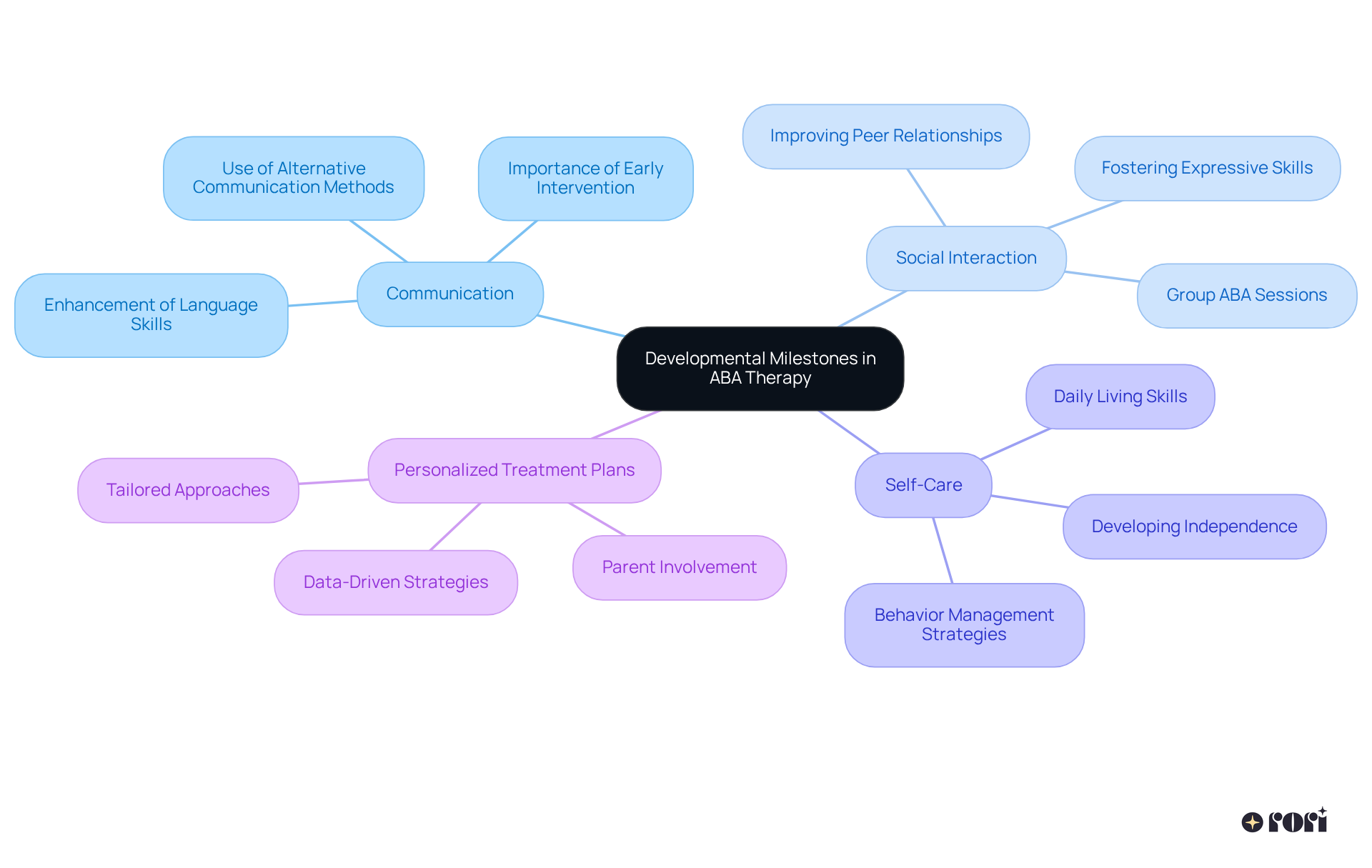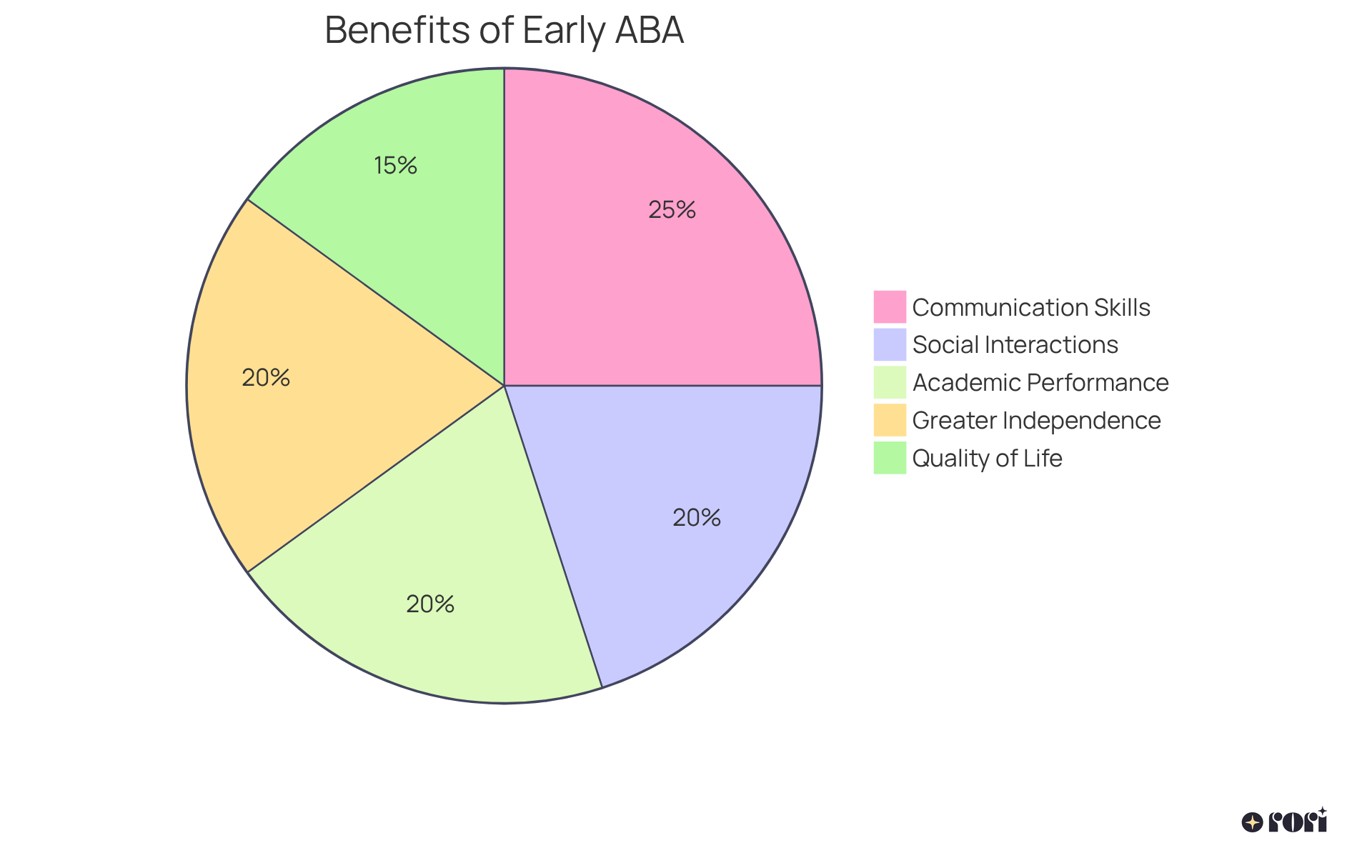ABA therapy is a wonderful option for children aged 2 to 6, a time when their brains are buzzing with growth and learning!
Let’s explore this together and see how we can support our children on this journey.
Understanding the optimal timing for Applied Behavior Analysis (ABA) therapy is crucial, especially considering its significant impact on children with autism. This evidence-based approach not only enhances essential skills but also creates a supportive environment for growth. So, what age is ABA therapy most effective? 🤔
Diving into this topic reveals the transformative benefits of early intervention. Starting therapy during those critical developmental years can maximize long-term success and independence. Let’s explore this together and see how we can make a difference for our little ones!
Applied Behavior Analysis (ABA) is a scientifically validated method designed to understand and modify behavior, rooted in the principles of behaviorism. This approach emphasizes observable behaviors and the environmental factors that influence them. The primary aim of ABA treatment is to enhance positive behaviors while reducing harmful or unwanted ones through structured interventions. Methods like reinforcement, prompting, and modeling are employed to instruct on new abilities and enhance current ones.
Studies show that ABA therapy is especially beneficial for children with autism, raising the question of what age is ABA therapy for, as it aids the growth of essential abilities in communication, social interaction, and daily living. A systematic review discovered that 86% of different interventions within ABA were effective in improving functional abilities, highlighting its strong methodologies. Furthermore, about 67% of individuals who attempt behavioral interventions, including ABA approaches, experience positive improvement. For example, a study showed that youngsters involved in intensive, long-term ABA therapy—usually 25 to 40 hours weekly—exhibited notable advancements in communication and social abilities, which leads to the question of what age is ABA therapy for.
Real-world applications of ABA principles include strategies like video modeling, which has become the most widely used method in therapy, showing notable enhancements in functional skills. This method is especially effective in instructing young learners by showcasing desired behaviors in a clear and relatable way. Moreover, the incorporation of ABA into educational environments, along with engaged parental participation, enhances its beneficial effects on individuals with autism. This collaborative method not only empowers children but also equips parents with essential skills tailored to their offspring's needs, fostering a supportive environment for growth.
The effectiveness of ABA treatment raises the question of what age is ABA therapy for, as longitudinal studies indicate that early intervention can lead to long-lasting improvements in cognitive, social, and adaptive functioning. As the field evolves, ongoing research continues to validate ABA as an evidence-based best practice treatment for autism spectrum disorder (ASD), reinforcing its role in helping children achieve their full potential. Significantly, the recent groundbreaking $50 million contribution from the Lurie family to create the Lurie Autism Institute illustrates the continuous backing for autism research and care, further improving the field of ABA.

Research indicates that what age is ABA therapy for is usually between 2 and 6 years old. This is such an important time for kids because their brains are growing rapidly, making them particularly receptive to learning new skills. By getting in early, we can see amazing improvements in communication, social skills, and everyday behaviors. While ABA can be beneficial at any age, many ask what age is ABA therapy for, as starting during these crucial years greatly increases the chances of long-term success and independence.
Studies highlight that timely intervention not only boosts immediate results but also sets a solid foundation for future learning and growth. This really underscores why acting early in the therapeutic journey is so vital! At Rori Behavioral Innovations Inc., we believe in the power of AI technology to tailor and enhance each child’s ABA treatment experience. This approach really amplifies the effectiveness of early intervention strategies.
By equipping families with the right tools for success, we empower parents to actively participate in their child’s treatment. This creates a collaborative atmosphere that can lead to even better outcomes. Let’s explore this together and see how we can support your family on this journey!

Developmental milestones are important indicators of how your little one is growing in areas like communication, social interaction, and self-care. ABA intervention is thoughtfully designed to support these milestones, especially considering what age is ABA therapy for, by providing structured help that makes achievement easier. For example, kids who engage in ABA interventions early on, which raises the question of what age is ABA therapy for, often experience quick growth in their language skills and social abilities—key components for successful interactions in school and community settings.
By aligning treatment goals with these developmental milestones, clinicians can create personalized plans that cater to each child’s unique needs. This tailored approach not only enhances the effectiveness of ABA treatment but also fosters a nurturing environment where children can truly thrive. Research shows that early intervention is crucial, particularly in understanding what age is ABA therapy for, as it can lead to significant improvements in communication and social skills, highlighting the importance of timely and focused ABA support.
Let’s explore this together! We’re here to help you every step of the way!

Timely assistance through ABA treatment offers wonderful advantages for kids with autism. You might find it heartening to know what age ABA therapy is for, as studies suggest children who join ABA treatment early often show remarkable improvements in communication skills, social interactions, and overall behavior. For instance, research indicates that kids who start treatment before they turn 5, which raises the question of what age is ABA therapy for, are much more likely to develop essential life skills and adapt well to social situations, making their transitions into school smoother.
Plus, early intervention is linked to better academic performance, greater independence, and an overall improved quality of life. As Ruben Kesherim puts it, "Research indicates that the earlier the intervention, such as Applied Behavior Analysis (ABA), starts, the more favorable the cognitive, language, and social-emotional development is likely to be." The earlier a child begins ABA therapy, the greater the chance for lasting, positive change, leading to the important question of what age is ABA therapy for. This really highlights how crucial timely intervention is in autism care. Let’s explore this together!

Understanding the right age to start Applied Behavior Analysis (ABA) therapy is essential for maximizing its benefits! Starting ABA therapy between the ages of 2 and 6 can lead to remarkable improvements in communication, social skills, and daily living abilities. Early intervention during these important years not only boosts immediate outcomes but also sets a solid foundation for future growth and independence.
The article shares key insights about how effective ABA therapy can be in supporting developmental milestones. By tailoring treatment to a child's unique needs, clinicians can create personalized plans that nurture a supportive environment. Research consistently shows that timely intervention can lead to significant improvements in cognitive, social, and adaptive functioning, highlighting the importance of considering the right age for ABA therapy.
Ultimately, we can't underestimate the power of early intervention in ABA therapy. It enhances the quality of life for children with autism and empowers families to actively participate in their child's development. As research continues to evolve, advocating for early access to ABA therapy is crucial, ensuring children can reach their full potential and thrive in their communities. Let’s explore this together and ensure every child gets the support they need!
What is ABA therapy?
Applied Behavior Analysis (ABA) is a scientifically validated method designed to understand and modify behavior, focusing on observable behaviors and the environmental factors that influence them.
What is the primary aim of ABA therapy?
The primary aim of ABA therapy is to enhance positive behaviors while reducing harmful or unwanted ones through structured interventions.
What methods are used in ABA therapy?
Methods used in ABA therapy include reinforcement, prompting, and modeling to instruct on new abilities and enhance existing ones.
Who can benefit from ABA therapy?
ABA therapy is especially beneficial for children with autism, helping them develop essential skills in communication, social interaction, and daily living.
What is the effectiveness of ABA therapy based on studies?
Studies indicate that 86% of different interventions within ABA are effective in improving functional abilities, and about 67% of individuals who attempt behavioral interventions, including ABA, experience positive improvements.
What is the typical duration of intensive ABA therapy?
Intensive, long-term ABA therapy typically involves 25 to 40 hours of therapy per week.
How does video modeling work in ABA therapy?
Video modeling is a widely used method in ABA therapy that showcases desired behaviors in a clear and relatable way, effectively instructing young learners.
How does parental involvement impact ABA therapy?
Engaged parental participation in ABA therapy enhances its beneficial effects, empowering children and equipping parents with essential skills tailored to their children's needs.
What is the significance of early intervention in ABA therapy?
Longitudinal studies indicate that early intervention can lead to long-lasting improvements in cognitive, social, and adaptive functioning.
How is ABA therapy supported by ongoing research?
Ongoing research continues to validate ABA as an evidence-based best practice treatment for autism spectrum disorder (ASD), reinforcing its role in helping children achieve their full potential.
What recent contributions have been made to support autism research and ABA therapy?
A significant recent contribution of $50 million from the Lurie family was made to create the Lurie Autism Institute, illustrating continuous backing for autism research and care.